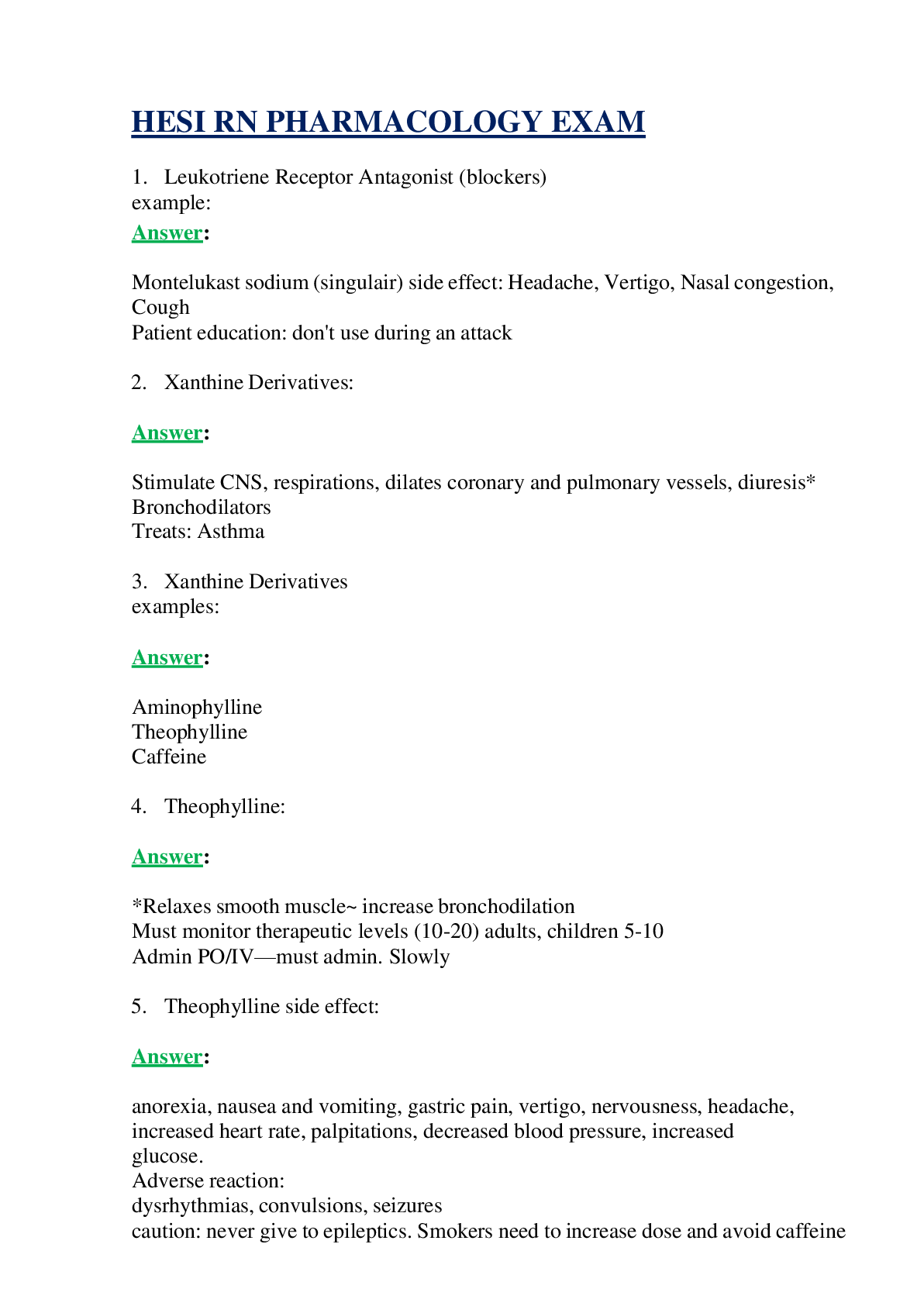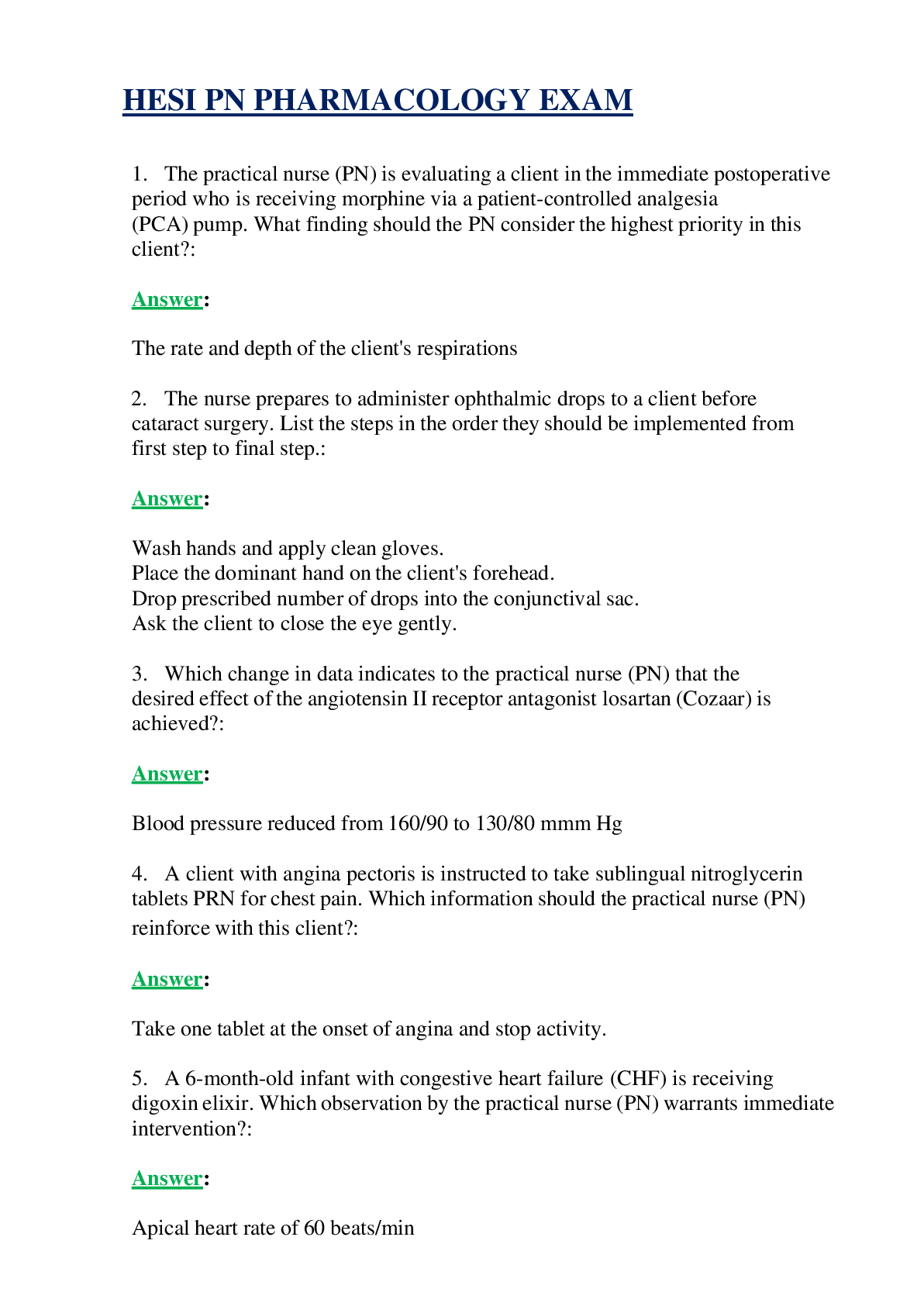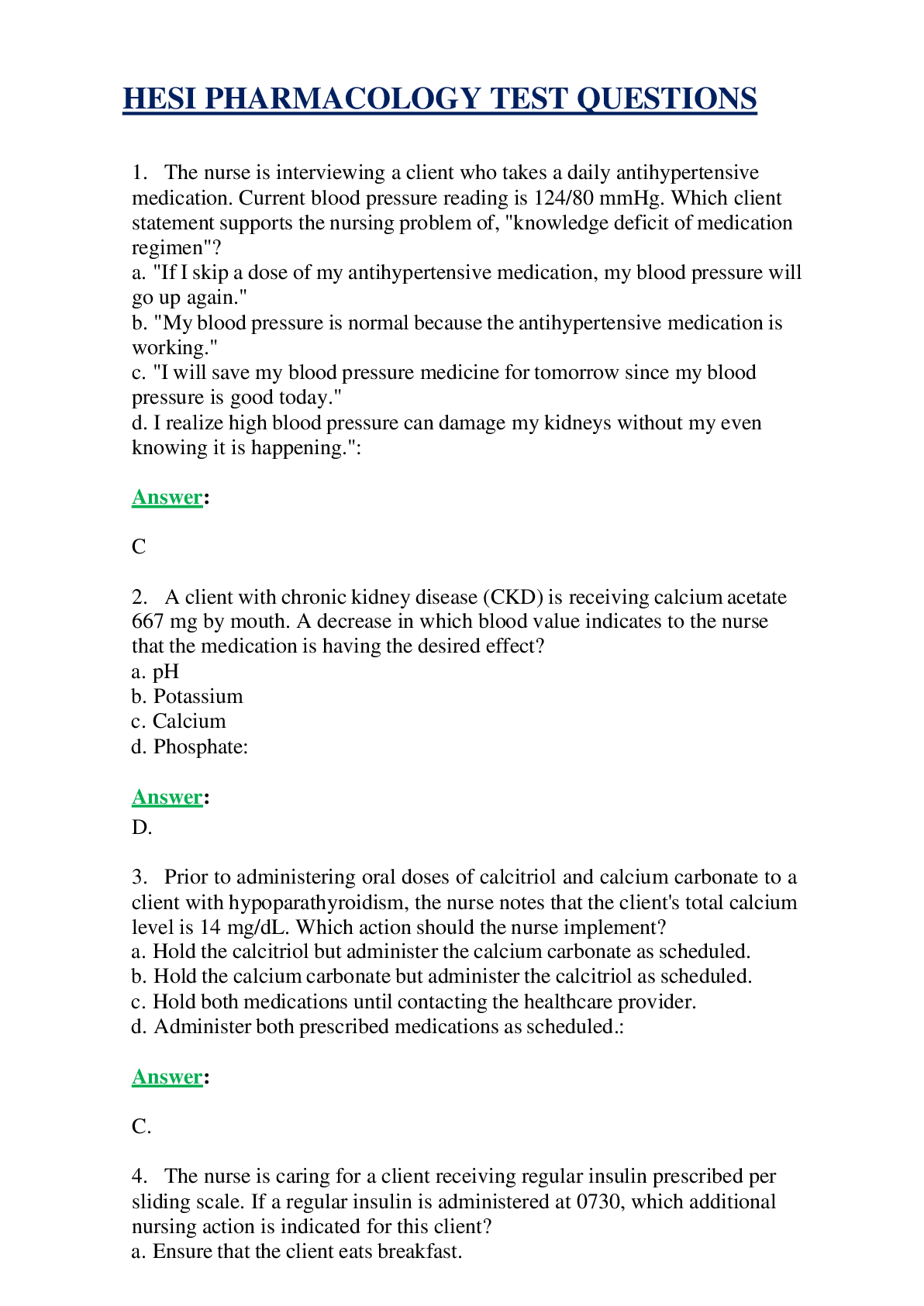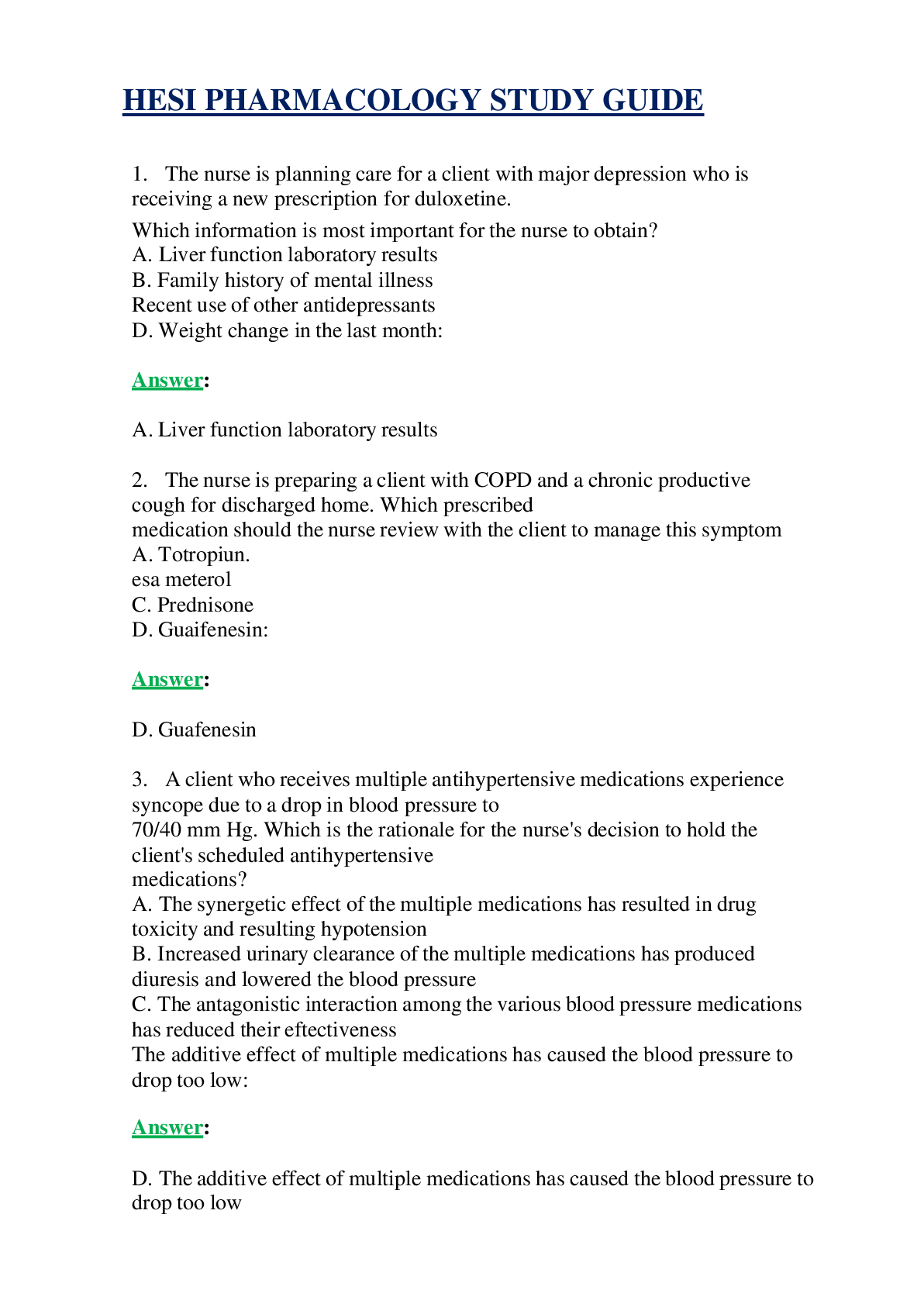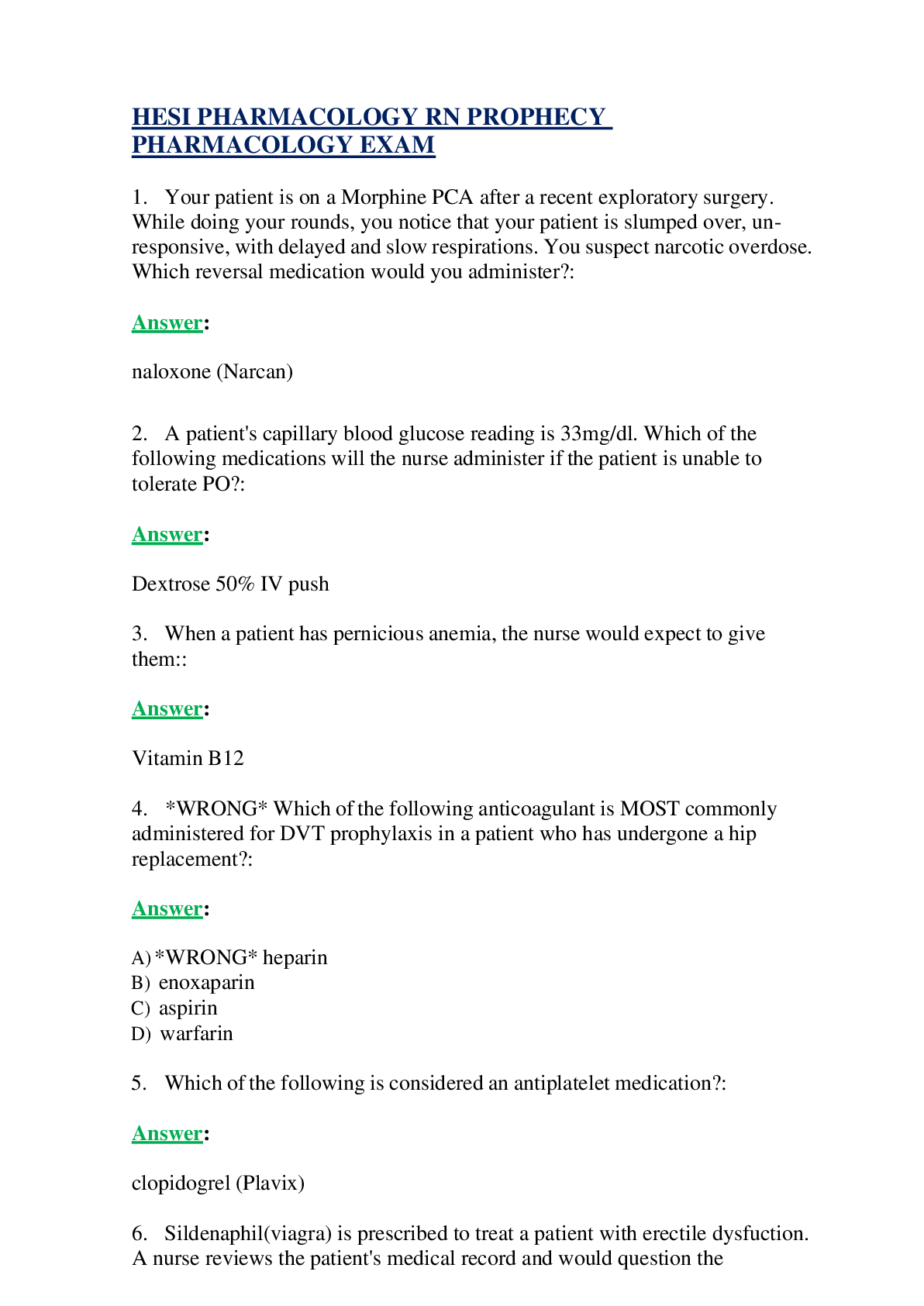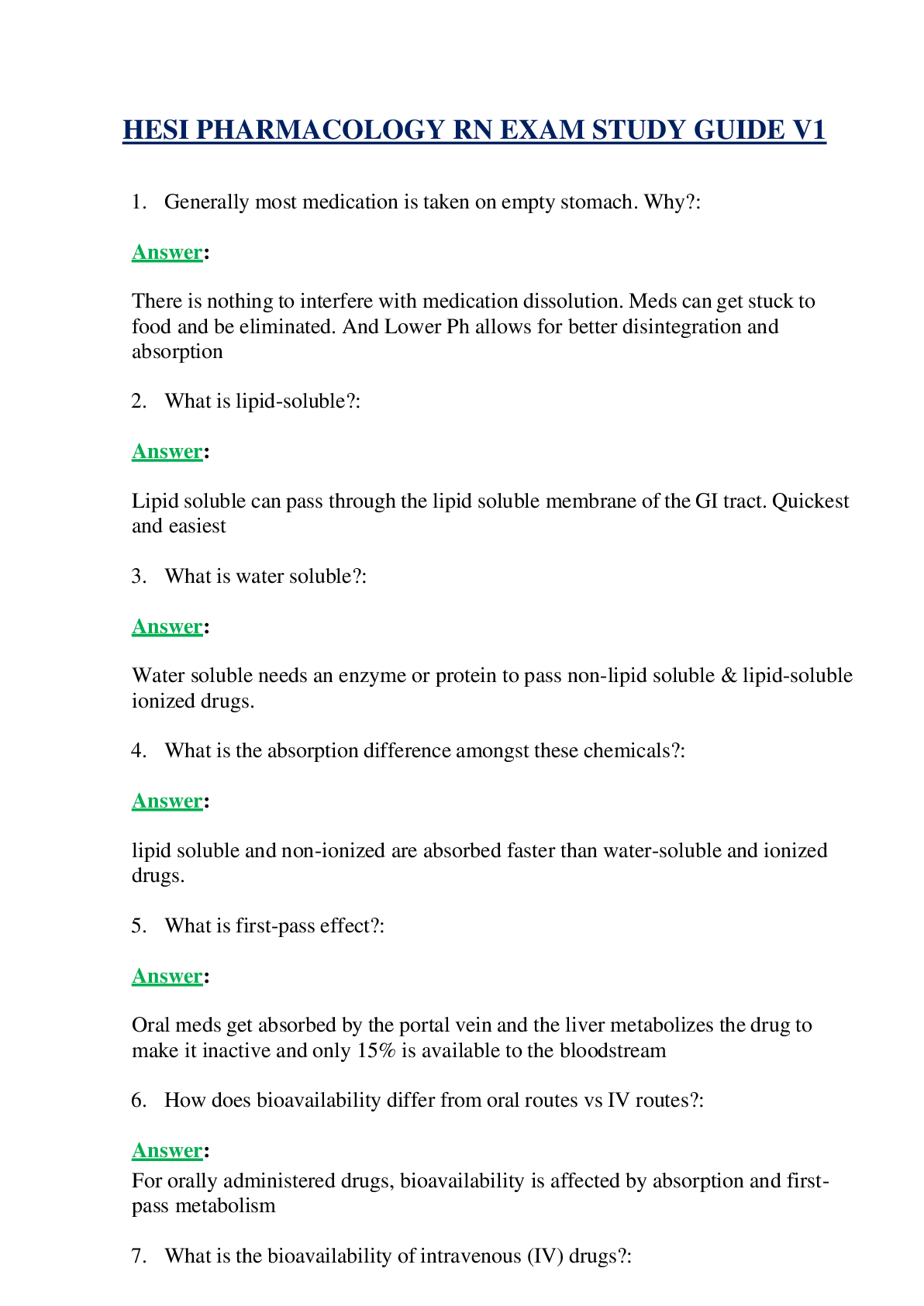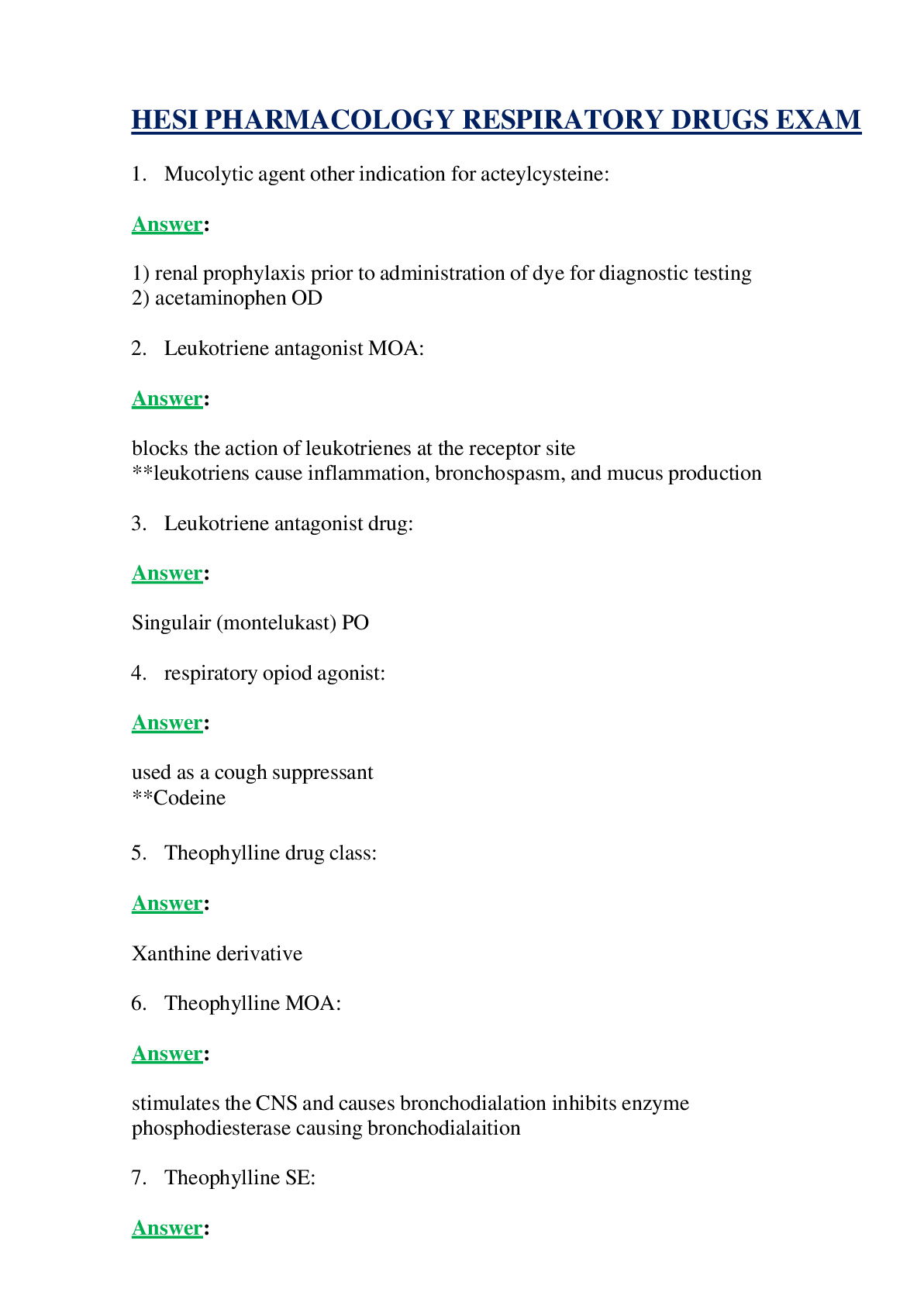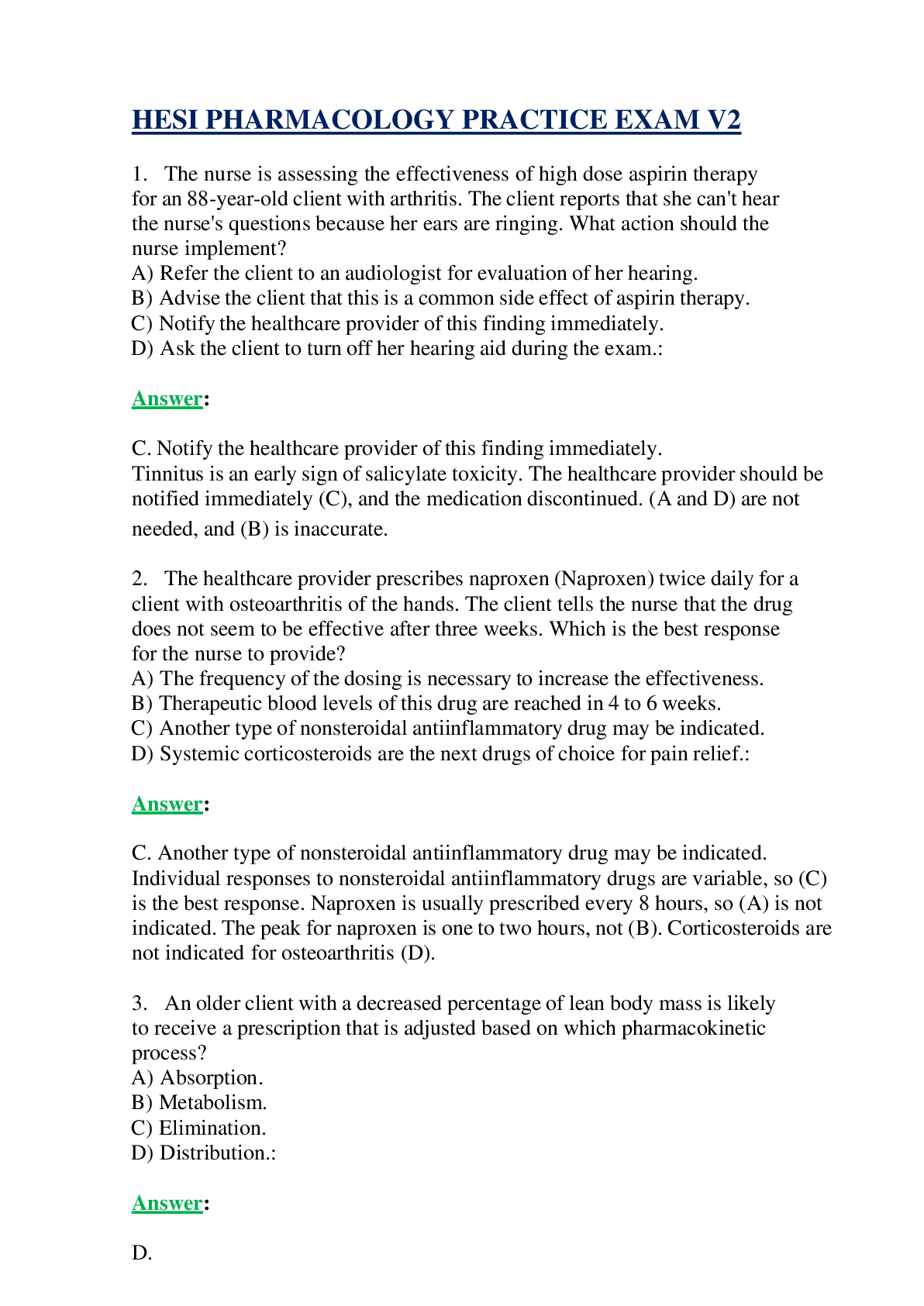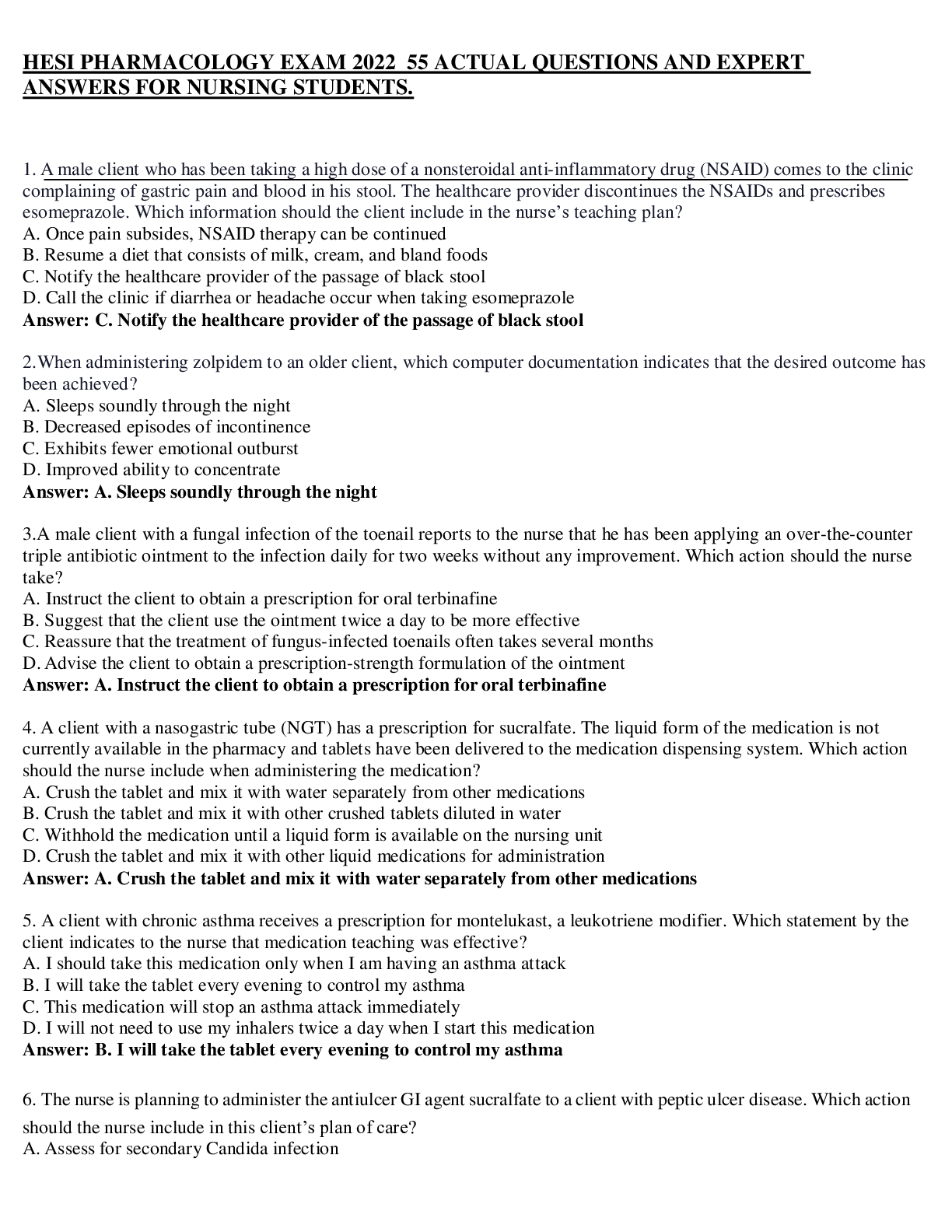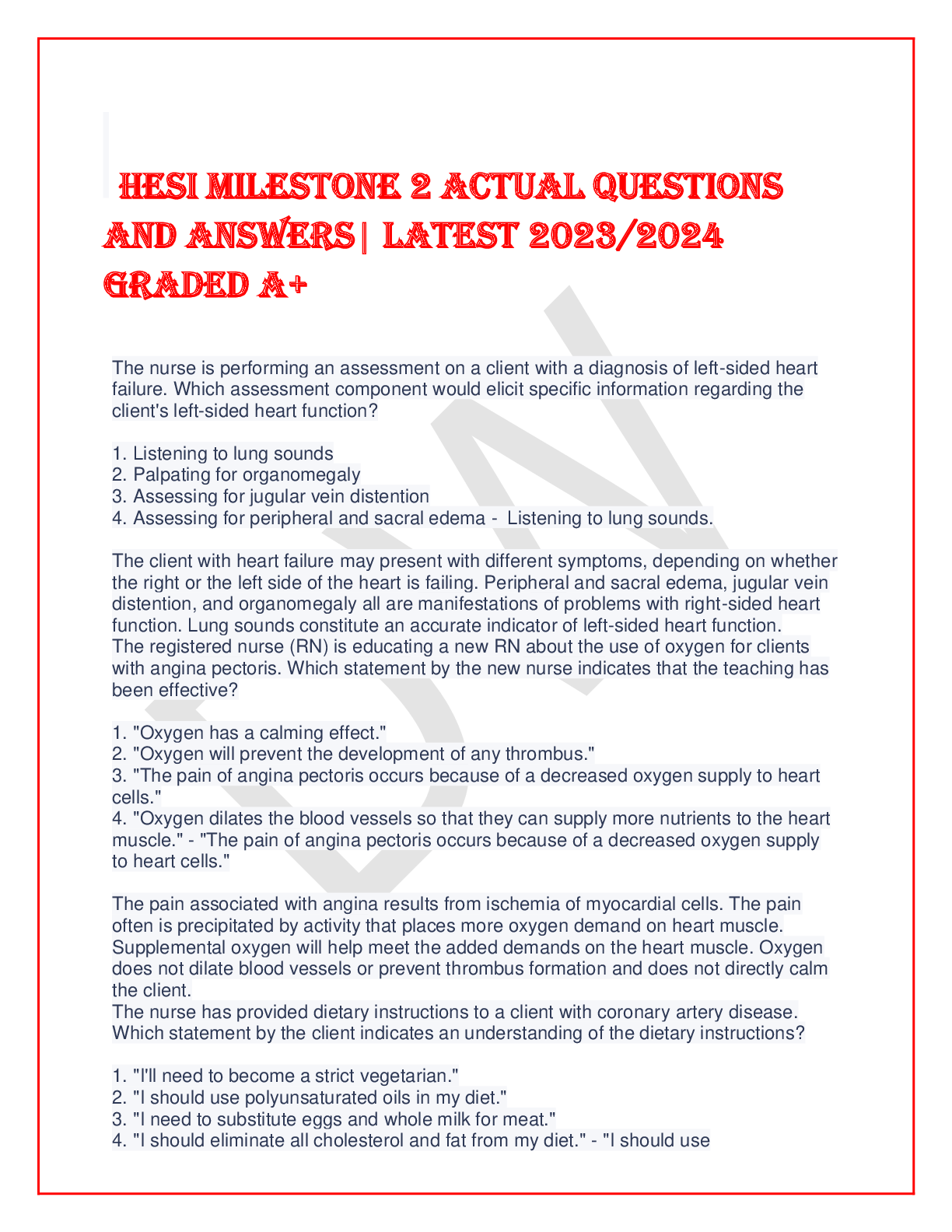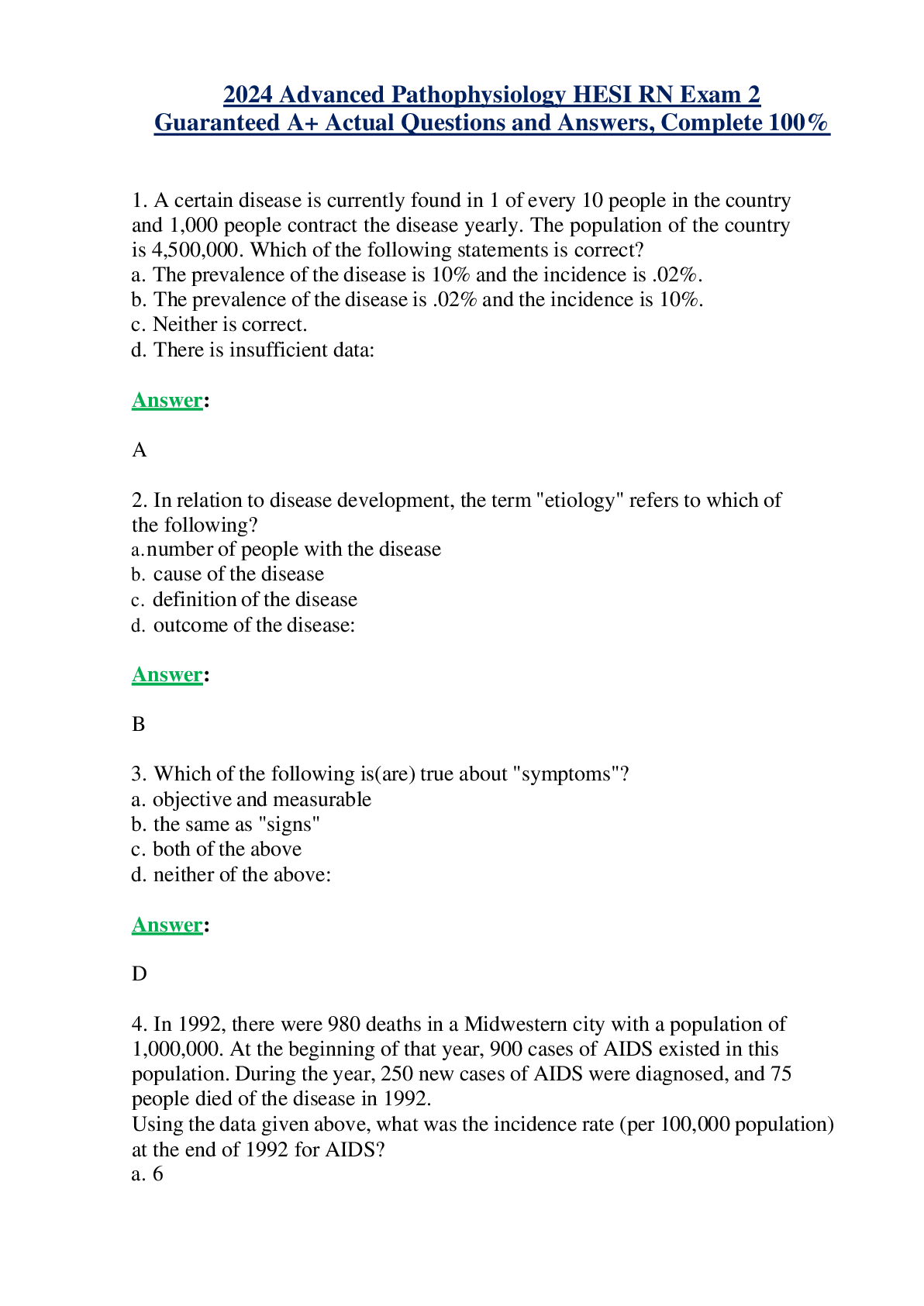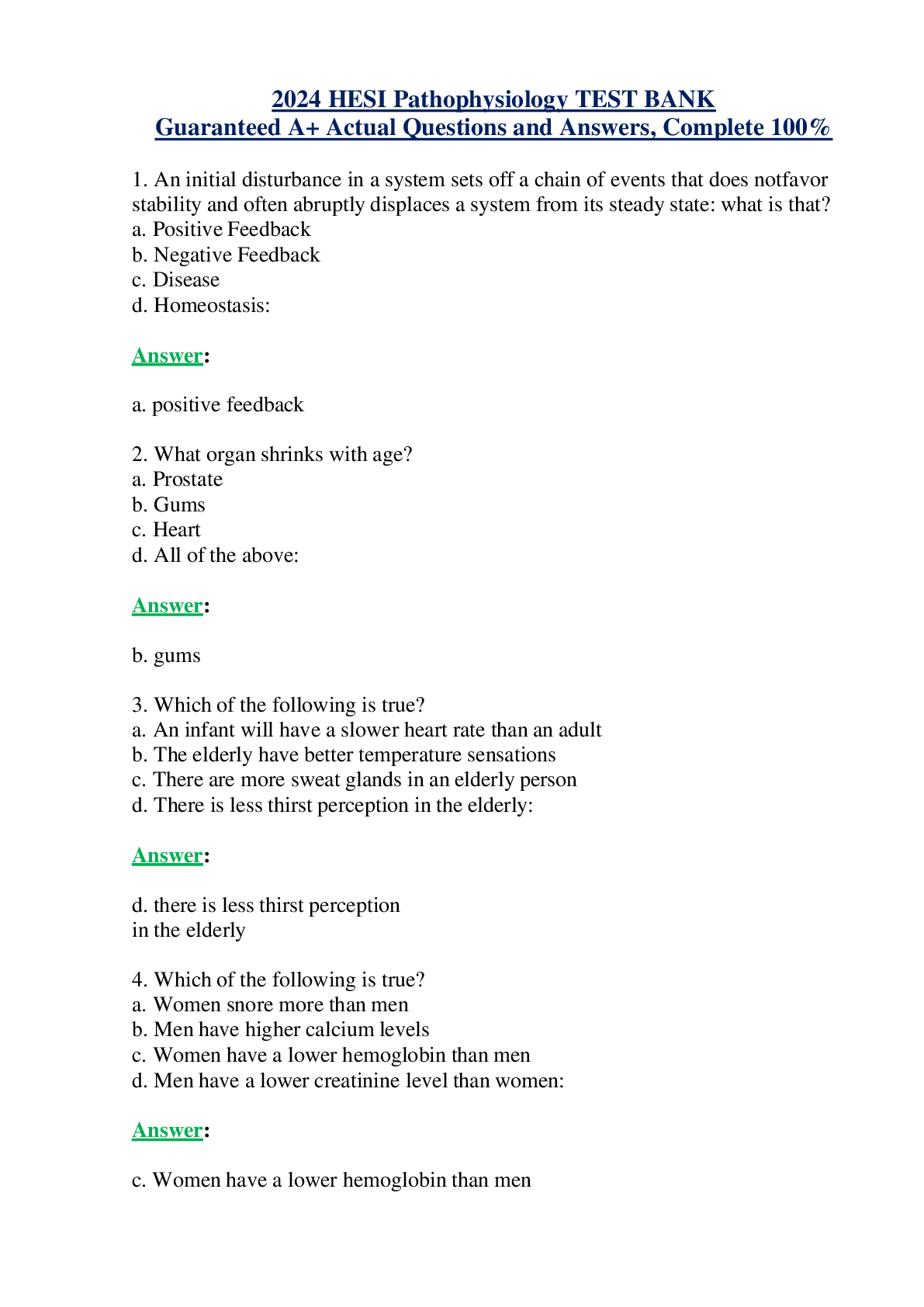HESI > HESI > 2024 HESI NCLEX-RN Fundamentals Updated Spring Guaranteed A+ Actual Questions and Answers, Complete (All)
2024 HESI NCLEX-RN Fundamentals Updated Spring Guaranteed A+ Actual Questions and Answers, Complete 100%
Document Content and Description Below
1. The nurse is assessing several clients prior to surgery. Which factor in a client's history poses the greatest threat for complications to occur during surgery?: Answer: Taking anticoagulants f... or the past year Rationale: Anticoagulants (B) increase the risk for bleeding during surgery, which can pose a threat for developing surgical complications. The healthcare provider should be informed that the client is taking such drugs. 2. Urinary catheterization is prescribed for a postoperative female client who has been unable to void for 8 hours. The nurse inserts the catheter, but no urine is seen in the tubing. What action will the nurse take next?: Answer: Leave the catheter in place and reattempt with another catheter. Rationale: It is likely that the first catheter is in the vagina, rather than the bladder. Leaving the first catheter in place will help locate the meatus when attempting the second catheterization 3. The nurse is instructing a male client in the proper use of a metered-dose inhaler. Which instruction should the nurse provide the client to ensure the optimal benefits from the drug?: Answer: Compress the inhaler while slowly breathing in through your mouth. Rationale: The medication should be inhaled through the mouth simultaneously with compression of the inhaler 4. The nurse is assisting a male client to the bathroom. When 5 feet from the bathroom door, the client states, "I feel faint." Before the nurse can get him to a chair, he starts to fall. What is the priority action for the nurse to take?: Answer: Gently lower the client to the floor. Rationale: (D) is the most prudent intervention and is the priority nursing action to prevent injury to the client and the nurse. Lowering the client to the floor should be done when the client cannot support his own weight. The client should be placed in a bed or chair only when sufficient help is available to prevent injury. [Show More]
Last updated: 1 year ago
Preview 1 out of 20 pages

Buy this document to get the full access instantly
Instant Download Access after purchase
Buy NowInstant download
We Accept:

Reviews( 0 )
$14.00
Can't find what you want? Try our AI powered Search
Document information
Connected school, study & course
About the document
Uploaded On
Mar 14, 2024
Number of pages
20
Written in
Additional information
This document has been written for:
Uploaded
Mar 14, 2024
Downloads
0
Views
51

